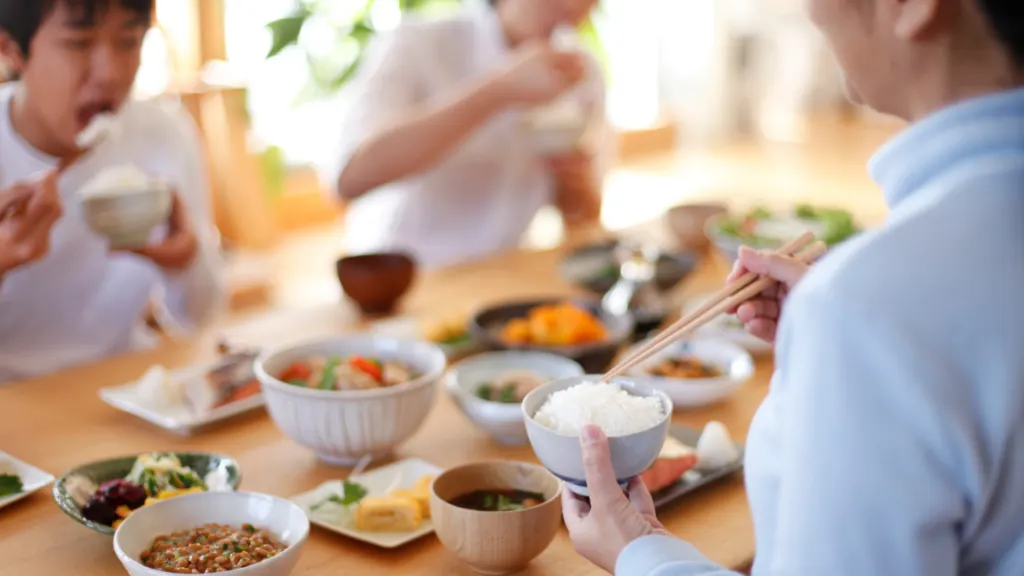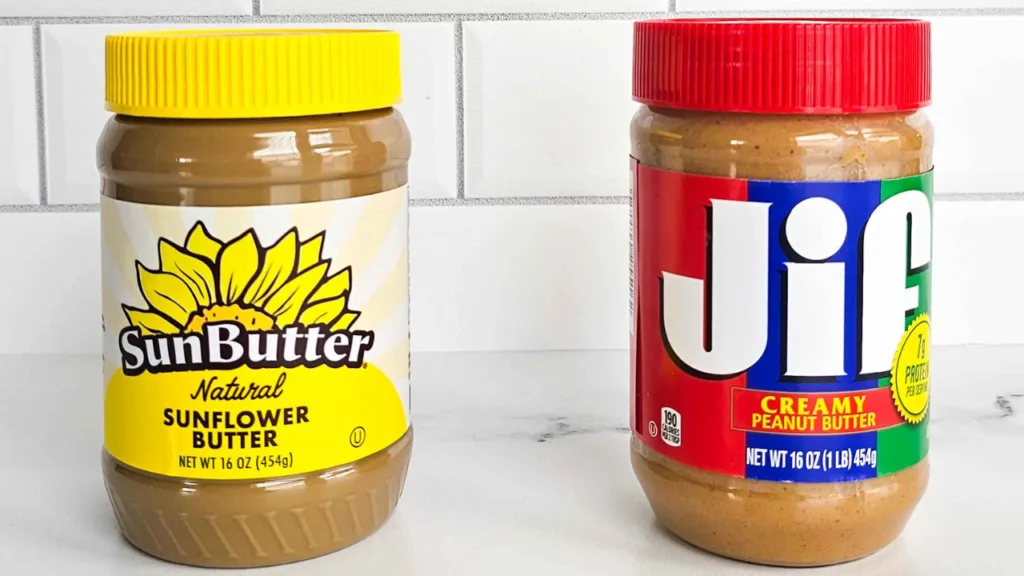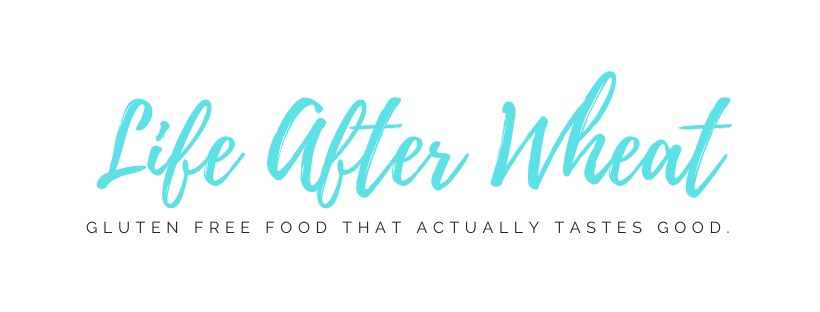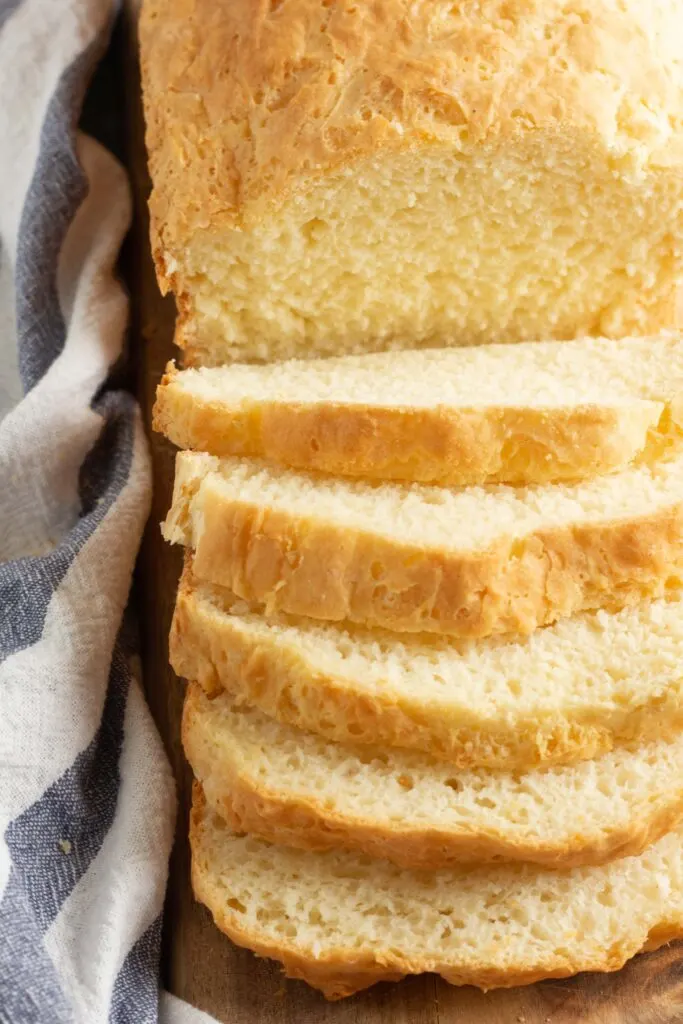Is your family struggling with mealtimes because of dietary restrictions? If you’re tired of making 2 versions of everything or wondering what to make (every.single.night), then let me help! This simple, actionable guide will help you take mealtimes from stressful to enjoyable for your family.
Adjusting to dietary restrictions is so hard, and affects the whole family. If someone in your home was recently diagnosed with celiac disease, gluten intolerance, or anything else that requires avoiding certain foods, then you know just how true this is!
The first few years of navigating food allergies was rough for our family, but 12 years after my husband’s diagnosis our family of 7 has learned how to make everything in not only a way that my he can enjoy it, but also the entire family!
Our kids know that mealtimes are for everyone, and we all eat the same thing. No one feels like they miss out, and mealtimes are something we all look forward to.
If those last two paragraphs seem impossible right now, that’s OK. Know that with small changes over time, your family can get there too.
I’m here to walk you through the process with small, actionable steps that will work regardless of your family’s size, dietary restrictions, or circumstances.
Use the Table of Contents (below the image) to jump to specific segments you need, or read through the entire post to get all the good stuff.
Let’s dig in!
WAIT! Don’t lose this post! Save this image on Pinterest

Table of Contents
READ THIS FIRST (REALLY, READ IT)
1. This is a judgment free zone!
Living with dietary restrictions and/or supporting someone you love as they navigate that journey is so hard.
This guide is meant to give you some tools, resources, and ideas to help make mealtimes more enjoyable for your family and is never meant to shame you or make you feel like you aren’t doing enough.
If what you try isn’t working or if you just can’t add anything else, give yourself permission to drop it guilt-free and try something else.
2. Go at your own pace
If you’re the type of person who likes to dive in and do all the things at once, great!
If you feel like you’re living in survival mode right now, I get it! If you aren’t ready to learn and dive into some new tactics, just bookmark this post until you’re in a good spot, then come back when you’re ready.
This is a lot of info, so it might take a while to implement all the things you would like to. Change takes time! Consider trying one or two ideas a time, giving them a few weeks or months to really stick before you assess if they’re working or not.
3. Everyone is different
Families come in all different shapes and sizes. I’ll be sharing what has worked for my family and some good general guidelines, so take what you want and feel free to leave what doesn’t work for you and your unique family and life circumstances.
4. Your accommodations matter
If you’re here because you love someone with dietary restrictions and want to make their life a little more inclusive, bless you.
Watching my husband navigate dietary restrictions as an adult has been eye-opening and I can only imagine what it’s like for teenagers and children!
It’s not just about avoiding certain foods, it can feel so isolating when you go to parties or activities. It often feels embarrassing to say no when someone offers you food, and sometimes people are unintentionally (or sadly, intentionally) cruel when it comes to food allergies.
You miss out on birthday cake and have to pack your own meals to summer camp. Your list of safe restaurants is only 3 items long and you have to ask questions before you consume anything anyone offers you.
In short, living with dietary restrictions is tough. So thanks for trying to make it just a little easier for someone you love.
5. Keep it simple
There is zero shame in serving gluten-free chicken nuggets and watermelon for dinner, or buying safe pre-packaged snacks that your kid loves.
Listen, if you’re just starting then everything can feel so overwhelming. If you’re supporting a child or loved one who was recently diagnosed, then your calm and positive energy are the best gifts you can give them.
You can worry about nutrition and more complicated meals later (if you want), for now just keep it simple and positive-consider this your permission to let the rest go!

OUR FOOD ALLERGY STORY: HOW WE GOT HERE
Oh man, this was a rough time.
Our first two kids were born with a kidney defect that caused a lot of sleepless nights. When I was six months pregnant with our third baby, I was still getting up every couple of hours with our toddler (which was a lot more sleep than I’d gotten the previous 3 years)
A few months before his diagnosis, my husband Allan started choking on random food and having esophageal spasms, which one time landed us in the ER because it felt like a heart attack (as it turns out, this is pretty common).
Eventually, his esophagus had closed up so tight that he couldn’t swallow food at all, and even water was hard to get down. As you can imagine, this was super scary!
We finally were able to get him in for a scope, where they stretched his esophagus and diagnosed him with eosinophilic esophagitis (that’s a mouthful!) also known as EOE, or an allergic reaction in the esophagus.
The next step was sending him to an allergist to figure out what his triggers were.
Twelve years later, I still vividly remember the phone call where he told me he was allergic to wheat, barley, oats, and soy, which meant he had to adhere to a gluten-free diet plus avoid oats and soy.
While we were grateful to have answers and get him on the road to recovery, we had zero knowledge of living with food allergies and it seemed SO overwhelming.
We had to learn how to read labels, which stores carried the foods he could eat (hint: there was no one-stop shopping anymore), and essentially, we had to learn how to bake and cook all over again.
There was definitely a period of grieving, especially for him, and I feel like this is something people don’t really talk about but it’s so important because it’s very real.
I don’t think we realize how easy it is to eat out on the fly, or go to a party, or visit friends or family, or go grocery shopping until suddenly, it isn’t.
Food isn’t just necessary for survival, it’s woven into our emotional experiences, our memories, and social situations. For a while, my husband felt isolated and unsure of how to meet his basic need of eating.
Watching him go through all of that ignited in me a passion for figuring out how to make his favorite foods enjoyable again, and helping him navigate this new lifestyle.
For a while, I lost something I had loved since I was a child: baking. Nothing turned out good anymore and I dreaded attempting one of our family recipes because the ingredients were so expensive and I knew it had a good possibility of ending up in the trash.
However, our budget was tight and I learned pretty quickly that making two versions of something, one gluten-free and one not, was not only a risk to my partner, but was way too time-consuming to be a feasible option.
Over time, I realized that with the right knowledge and ingredients, everything (including biscuits, cinnamon rolls, and even sandwich bread), can be made to taste just as good as its gluten-filled counterpart.
After 12 years and thousands of hours spent in the kitchen, I’ve learned how to make anything gluten-free, and to make it in a way that I can serve it to our gluten-eating kids and their friends, and neighbors and family, and anyone else.
We have officially become a gluten free family and enjoy eating the same foods at home.
I see so many people struggling their way through a life with dietary restrictions, missing out on their favorite foods, accidentally ingesting foods that make them sick, and missing out on social situations. And this breaks my heart!
I’m here because I want to help you and your family live a life that you’re all truly happy with.

CREATING A SAFE & INVITING KITCHEN
The kitchen is the heart of the home, where family members and friends gather to eat and talk and unwind from the day.
If someone in the family has celiac disease or another reason for dietary restrictions, this room can also become one of potential exposure and subsequent stress and sickness. It can also feel exclusive, with a reminder of all the foods they cannot eat.
Here are some ways you can create a safe and inviting kitchen for everyone in your home:
- If possible, convert your kitchen to a gluten-free (or nut-free, etc.) space. Sometimes, it’s just not practical to make the entire kitchen gluten-free so if you can’t manage it, continue to the next tips.
- OR create a gluten-free/allergen-free zone. Designate a cupboard and a shelf in the fridge to gluten-free food, or vice versa. This makes it easy for the person with dietary restrictions to easily find what is safe for them to eat.
- Swap condiment jars for squirt bottles to avoid cross contamination.
- If you select the shared kitchen modality, label everything that is safe/unsafe.
- Purchase separate toasters, pans, utensils, colanders, and cutting boards and keep them in a separate cupboard. Consider buying a certain color such as red, or labeling each of them so you remember which are which.

CULTIVATING FOOD EXPLORATION
Did you know that around 9% of those diagnosed with celiac disease also develop anorexia nervosa? While there is still a lot to learn about this correlation, it is safe to say that stress around food and the restriction of entire groups of foods could contribute to the problem.
In addition, many who are required to adopt dietary restrictions go through a grieving process which often involves a lack of interest for, or enjoyment of, food in general.
If you’ve been through this, you know what I’m talking about.
If someone you love has been or is going through this, it is so important to validate the experience and provide opportunities to re-ignite your loved one’s interest in food and help them enjoy what they can safely eat.
Here are a few ideas that we have used in my family, and that others have shared:
- Every time you go to the grocery store, pick out one item you haven’t tried yet. It could be a fruit or vegetable, or a packaged meal, snack or treat. This only adds a few dollars to your tab, but makes shopping more fun and helps you find more things you enjoy eating.
- Similar to the previous idea, plan to try one new recipe each week. This could be an entrée like breakfast or dinner, or a snack or dessert!
- Try preparing something you like in a new way. Enjoy mashed potatoes? Try making potato fritters! Do you like PB&J but haven’t found a gluten-free bread you like? Try dipping crackers in a peanut butter and jelly swirl instead.
- Keep it stress-free. The adjustment will take time and that’s OK! Try to provide opportunities for new foods and don’t worry about making one food over and over again because it’s the only thing that sounds good.

PLANNING INCLUSIVE MEALS
When my husband was first diagnosed with food allergies, I had 2 young kids and another on the way. My attempts at gluten-free baking were, um, not great.
I started out making 2 versions of everything: I would clean the kitchen, make the gluten-free version, then put it safely aside and make the “regular” version for everyone else.
I quickly realized that this just wasn’t going to work for us. It took twice as long and I was constantly stressed about cross contamination, so I decided I would just learn how to make gluten-free meals that tasted so good, the entire family could enjoy it.
Admittedly, it took me a while to figure out how to make the things we loved (and make them well), and it might for you too. But for us, it was worth the initial investment to be able to cut down on prep time and risk of cross contact, and enjoy the same foods together as a family.
How to Plan Inclusive Meals:
- Make at least one meal a day where the entire spread is safe for everyone. This could look like using corn tortillas instead of flour tortillas, serving a baked potato instead of bread, swapping a gluten-free version, or making a meal that is naturally gluten-free.
- Serve buffet style if you’ll have foods available that someone cannot eat. Place the unsafe foods at the end of the line to reduce risk of cross contamination, and clearly label them.

COOKING TOGETHER
Cooking together as a family can help those who have dietary restrictions to feel in control, as well as help other members of the family show care and cultivate empathy.
It’s a great way to spend time together, try new foods, and help everyone feel included!
- Start with simple recipes that are naturally gluten-free (or dairy-free, egg-free, etc.) to take some of the guesswork out and experience more success in the kitchen. This will help you keep momentum as you try new things in the kitchen. Serve something like ice cream (be sure to check the labels) for dessert, or serve fresh fruit for a side dish.
- Instead of adapting your own recipes, find recipes that were created to be gluten-free (or whatever else you need). Swapping ingredients isn’t always straightforward, so it helps to lean on someone else’s expertise for a while. I have over 100 family-approved, delicious recipes on my site!
- Try cooking and baking when you don’t have the pressure of putting dinner on the table for your family. Start with easy recipes you can make just for fun during a rainy afternoon or when you’re craving something sweet.
- Remember that spending time in the kitchen isn’t about the result as much as it is about finding joy in the process and building a positive relationship with the foods you and your family can eat. Try to keep it light and chalk kitchen failures up as learning opportunities.
ADAPTING FAMILY FAVORITES
Chances are, no matter what dietary restrictions you’re facing, your family’s favorite recipes can be adapted to meet those needs.
The photo above is a loaf of gluten-free sandwich bread. It’s an adaptation of Allan’s grandma’s bread recipe, from her cookbook she gave me years ago. I love that we can still enjoy her bread while eating gluten-free!
Here are a few of my favorite tips/swaps for different dietary restrictions:
Gluten-Free Cooking and Baking Tips
FLOUR BLENDS
- gfJules – makes the fluffiest breads and rolls. A great all-purpose blend that works well as a 1:1 sub in pretty much any recipe. Top 9 free and certified gluten-free. If you need a corn-free version, Better Batter is my 2nd picl.
- Cup4Cup – perfect for biscuits (try my viral 4-ingredient biscuit recipe!) and pastries like choux pastry and pie crusts. Also works great in cakes, cookies, and quick breads. Works better than most for breads, but definitely not as good as gfJules.
- Bob’s Red Mill 1:1 or King Arthur Measure for Measure – these are great budget blends that are easy to find in stores but don’t work well for breads. You might notice a bit of an aftertaste and some grit in your baked goods, as well as needing to add a touch more liquid or a bit less flour in your recipe for best results. These blends work pretty well in breakfast foods like pancakes and waffles.
BAKING TIPS
- For Cookies – decrease flour by a tablespoon or two and refrigerate the dough for 24-48 hours before baking.
- For Breads and Rolls – Increase liquid by 50% and use gfJules flour blend. Mix with paddle attachment of a stand mixer, the dough should be more like a thick batter. Shape immediately using extra flour as needed to coat the surface only (don’t work it in), and rise just once before baking. Bread might not brown as much.
- For Breakfast Foods – things like waffles and pancakes are super easy and usually convert well. Using a premium blend like Cup4Cup and gfJules will give the best texture and keep your gf baked goods from getting crumbly too quickly.
- Gluten-Free Pasta – I love Jovial and Tinkyada brands. Both are available in stores such as Walmart and Target, and they have a better texture than corn-based blends such as Barilla or Ronzoni.

Dairy-Free Swaps for Dairy-Free Recipes
FOR MILK
- Almond Milk – Great for drinking, cereals, and baking; it has a slightly nutty flavor.
- Soy Milk – Rich and creamy, ideal for cooking and baking, and it’s a good source of protein.
- Coconut Milk – Perfect for creamy dishes and desserts, adds a noticeable coconut flavor
- Oat Milk – Excellent in coffee and smoothies, has a mild, slightly sweet flavor. Full-fat oat milk (Oatly has one) is a great sub for whole milk. Note that if you’re gluten-free, you’ll want to look for an oat milk that is certified gf
- Rice Milk – The most hypoallergenic of milk substitutes, good for baking and cooking where a neutral flavor is needed.
FOR BUTTER
- Coconut Oil – Can be used in baking or cooking, but it’s not great for spreading. There are different varieties with varying degrees of coconut flavor.
- Vegan Butter (like Earth Balance) – Work well in baking, spreading, and cooking, closely mimics butter.
- Olive Oil – Great for savory dishes. Do not use for a sub in baked goods as the flavor is very different.
FOR CREAM
- Coconut Cream – Thick and rich, perfect for desserts, soups, and sauces. You can purchase in a can in the Asian aisle. Be sure to shake well before using as it separates.
- Cashew Cream – Blend soaked cashews with an equal amount of water; great for soups, sauces, and desserts. I love adding nutritional yeast to make a yummy alfredo sauce! Does not whip.
- Dairy Free Cream – There are now some dairy-free cream options in the dairy section of most grocery stores. I have found that they work better for some things than others, so you’ll have to experiment and see if you like them.
FOR CHEESE
- Nutritional Yeast – I love this stuff. It adds a delightful cheesy flavor to popcorn, sauces, anything. You can find it in the baking aisle or online.
- Vegan Cheese – Available in many forms (shredded, sliced, blocks, spreads) Everyone has a different brand they like, and some melt better than others.

Egg-Free
FOR EGG WHITES
- Aquafaba: Aquafaba is the liquid from a can of beans, most often chickpeas, that mimics egg whites (you can even make meringue with it!) As the American Test Kitchen pointed out, chickpea aquafaba outperforms the rest, and you’ll have best results if you mix in some cream of tartar. This article is a great resource if you would like to delve into one of the most popular vegan ingredient hacks.
FOR WHOLE EGGS
- Applesauce: Use 1/4 cup of unsweetened applesauce to replace one egg. This works best for already-sweet baked goods like waffles, pancakes, and muffins.
- Mashed Banana: Use 1/4 cup of mashed banana (about half a banana) to replace one egg. Like applesauce, it adds moisture and a bit of sweetness and is best in sweet baked goods and breakfast options. Be aware that whatever you make will have a distinct banana flavor.
- Flaxseed Egg: Mix 1 tablespoon of flaxseed meal with 3 tablespoons of water and let it sit for a few minutes until it becomes gelatinous. This is excellent for adding fiber and works well in hearty recipes. You can also use in sweet baked goods, but the texture will be different.
- Chia Seeds: Use 1 tablespoon of chia seeds mixed with 3 tablespoons of water, let sit for 15-20 minutes. Similar to flaxseed, it forms a gel that can bind ingredients. Some prefer this option for breads.
- Commercial Egg Replacer: Products like Ener-G Egg Replacer are formulated to mimic eggs in baking by providing structure and lift. I have had great results using Bob’s Red Mill egg replacer in all my gluten-free bread recipes (and to test egg-free options in my cookbook, How to Make Gluten-Free Bread That Actually Tastes Good)
- Carbonated Water: Yep, you heard that right! This one well in cakes, cupcakes, muffins, and even cookies. Be sure to use unflavored, unsweetened carbonated water so you don’t change the flavor of your baked goods.

Nut Swaps
- If you can have some nuts but not others, try swapping that version in spreads, snacks, and recipes.
- Swap seeds for nuts. Sunbutter is a sunflower-seed based spread that’s a great substitute for peanut butter. You can also use other types of seeds such as hemp seeds and pumpkin seeds for added crunch in trail mixes, granola bars, and other recipes.
- Use pretzels! Crushed pretzels make a great nut substitute on sundaes and other desserts. You can also use them in crusts!
- Trade roasted beans for nuts for salads and snacking. There are lots of recipes for roasted chickpeas and other beans, and even packaged products of various types.

EATING OUT: WITHOUT THE STRESS
A lot of people struggle with family gatherings and other social situations where food is involved when they’re beginning a gluten-free lifestyle.
This is a huge topic that is hard to put in one article, which is why I wrote an entire section in my course, Gluten Free 101.
Nevertheless, here are a few tips that will help you feel more comfortable dining away from home when you need to follow a special diet:
- Bring Safe Food – Always. If you’re invited to a potluck, bring a couple things to share so you can eat, too. Consider including a label that specifies the restriction and asks people to only use the provided serving spoon.
- Ask Questions – This may sound simple, but it’s super hard for a lot of people. You might feel like you’re being “needy” or putting people out, but really you’re just advocating for yourself and that is super important! The same way that you would pack an inhaler with you if you had asthma or ask people to let you know if they’re sick before you visit with a compromised immune system, dietary restrictions are necessary for your health. Most people still don’t understand dietary restrictions, so come from a place of education and remember to be kind and appreciative. Whether you’re invited to a dinner party or eating at a restaurant, get comfortable asking questions.
- Plan Ahead – Talk to the host, call the restaurant, offer to help prepare the meal or bring a safe option. Being involved in the planning process will help you feel comfortable dining away from home.
- Ask for Support, Not Permission – This can be a hard one, but a great concept for many conversations about your needs. If you have a group of friends, instead of hoping they choose a safe restaurant then you can say something like, “hi friends, I’m excited to go to lunch next week! Because of my dietary restrictions there are only a few places I can safely eat, so I’ll share them and you can pick which one sounds best”.
SUMMARY
Starting a gluten-free lifestyle can be stressful and overwhelming. Allow yourself the time and space to go through a grieving process, then use some of these tips to help you live a life you can enjoy and flourish in.
There are so many great gluten-free recipes, products, and resources now, so you don’t need to reinvent the wheel!
If you’re new to gluten-free, consider signing up for my course Gluten Free 101. It walks you through everything you need to know and gives you lifetime access to a supportive community.

